How does Online Interactive and Digital TV from Online
Interactive TV and Digital TV, they are also IPTV and DVB-C, have much in common, for example, you can watch modern television in excellent quality. At the same time, they are different services designed for different audiences and providing a different approach to watching TV. In this material we will consider both services and tell about how they work, what they have in common and what distinguishes them.

To broadcast television services within the network, they must first be received and encrypted. To obtain using different sources:
To receive a signal from a satellite, the central head station is used, where most of the receiving equipment is located.
')
The signal from the satellite is received by relatively small (2.4 meters) offset antennas, providing an excellent signal level and reception stability. The use of offset antennas in our latitudes in most cases allows us not to install expensive heating systems that protect against the accumulation of precipitation (snow), which have a strong effect on the reception quality.
We receive more than 100 channels from 10 satellites, for this we have an antenna post for 10 antennas. Reception from almost all satellites available in our region: Yamal, ABS2, HotBird, Astra, Eutelsat 36A / B, Thor, Eutelsat 9A, Telstar 12, Horizons-2, Intelsat 15.
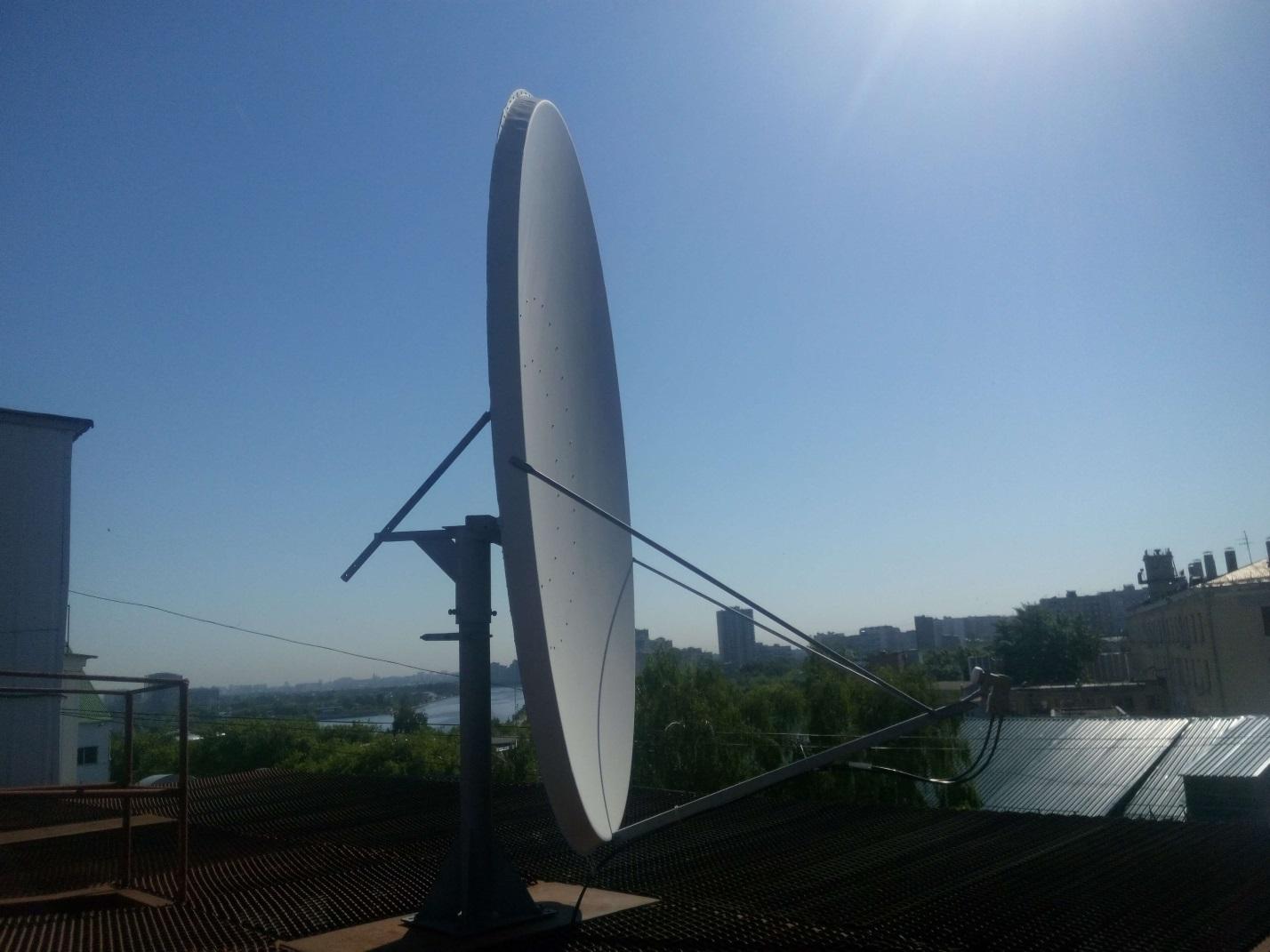
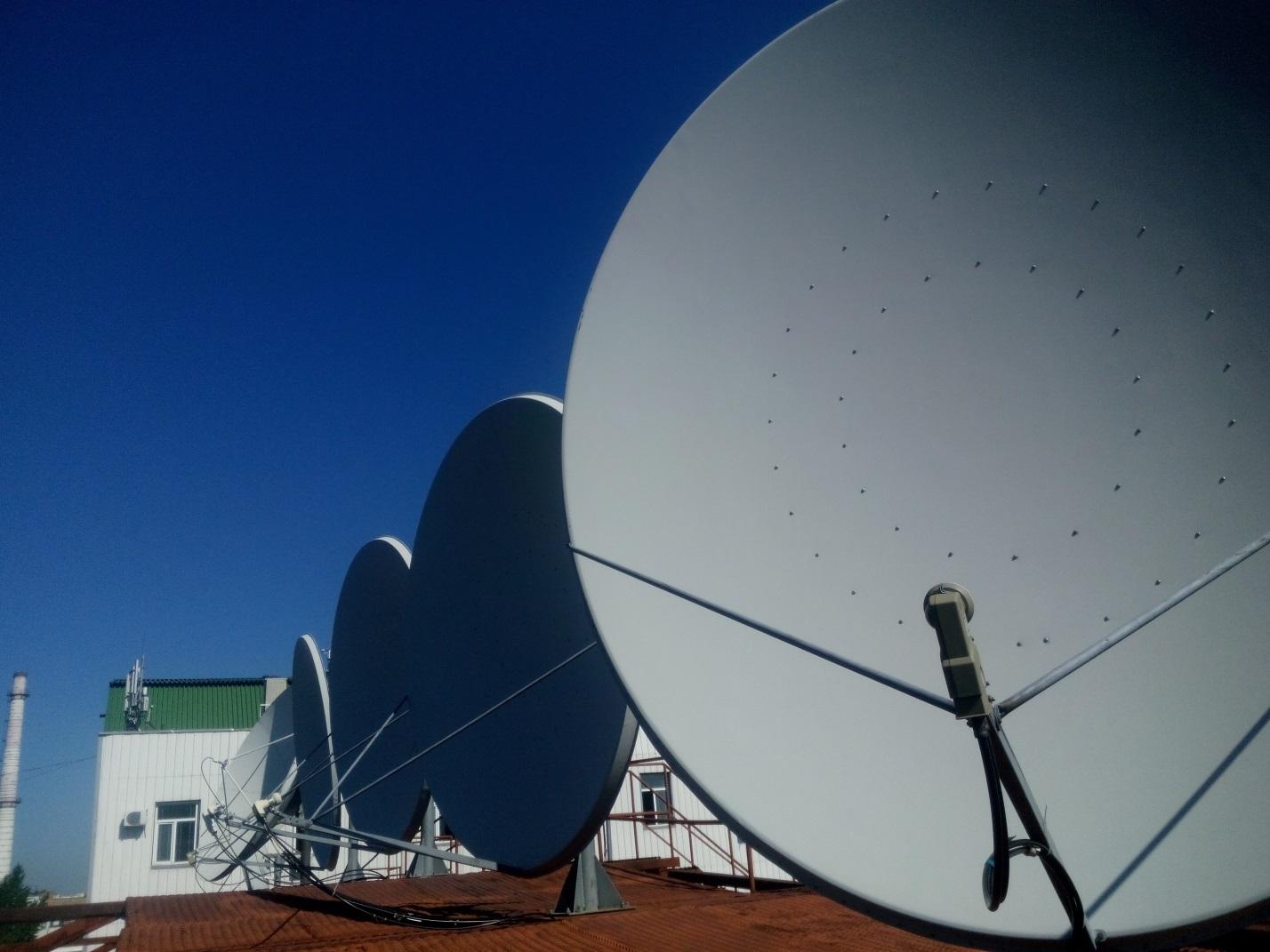
The signal from the satellite goes to the multiswitch, to which the receiving equipment is connected. We use the multiswitcher manufacturer WISI, its products provide high quality and stable operation. To ensure high stability of the service, we use only the cable from Commscope. Additional passive dividers are practically not used. Usually there is an unbroken cable from multiswitcher to receiving equipment (satellite receiver).

Most of the satellite signal comes in encrypted form, for its reception and descrambling only professional receivers Harmonic of the ProView 7000, 2900, AppearTV and WISI series are used.
There is a feature of satellite reception, unknown to many users of household receivers - it is impossible to receive all TV channels with one conditional access card at once. The entire encrypted stream entering the receiver goes through the CAM module (a special device used to descramble streams), and the smart card (access card) is only a unique key for accessing the content.
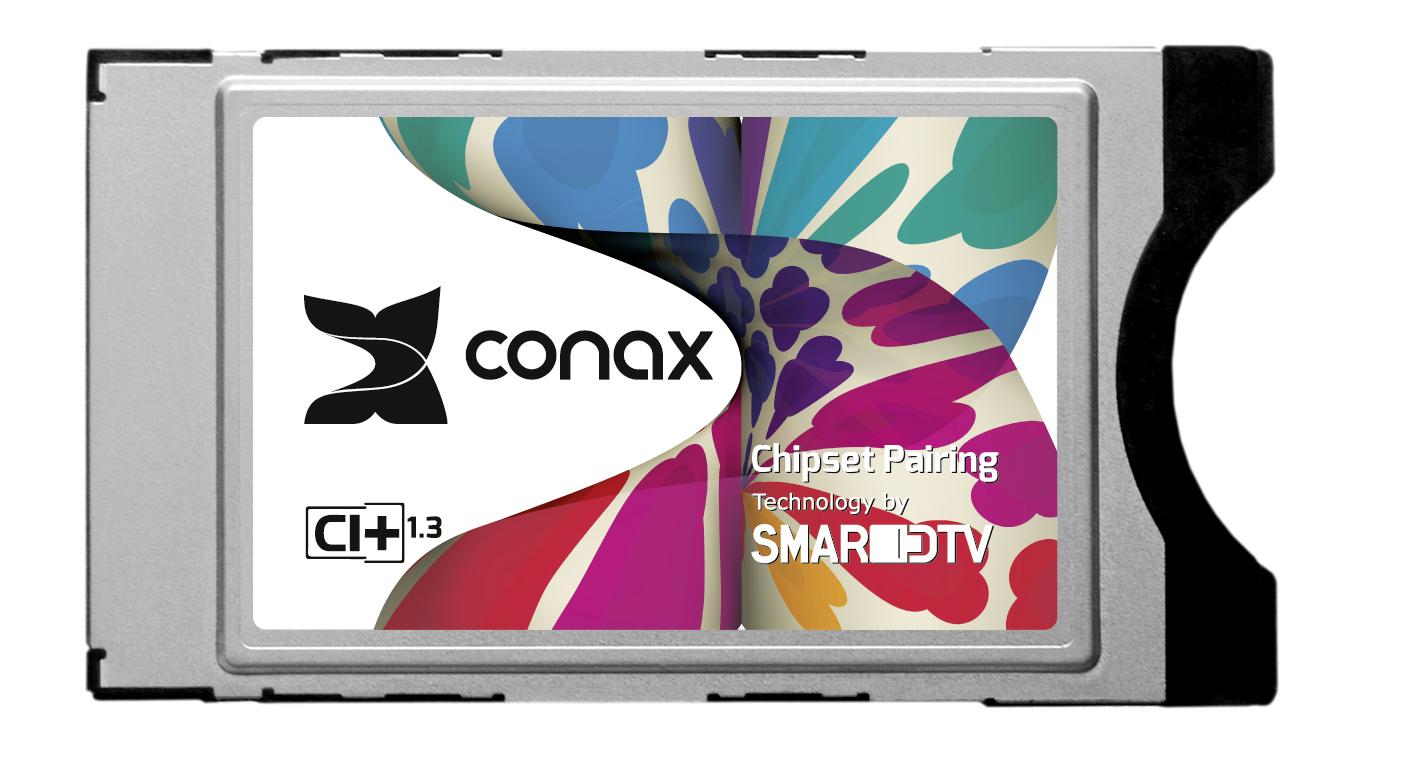
It turns out that operators have to use one access card for each channel, and, accordingly, on a separate CAM module. Some CAM-modules can open several channels at once, but only from one transponder . We use only modules that recommend the use of television companies, the quality of the service depends on their stable operation. Domestic CAM-modules can periodically reboot spontaneously, which is uncritical for a domestic receiver, but very important for the operator.
We use more than 100 modules and, accordingly, 100 access cards, which we carefully monitor and change regularly, in order to maintain new encryption systems and not interrupt broadcasting for our subscribers.
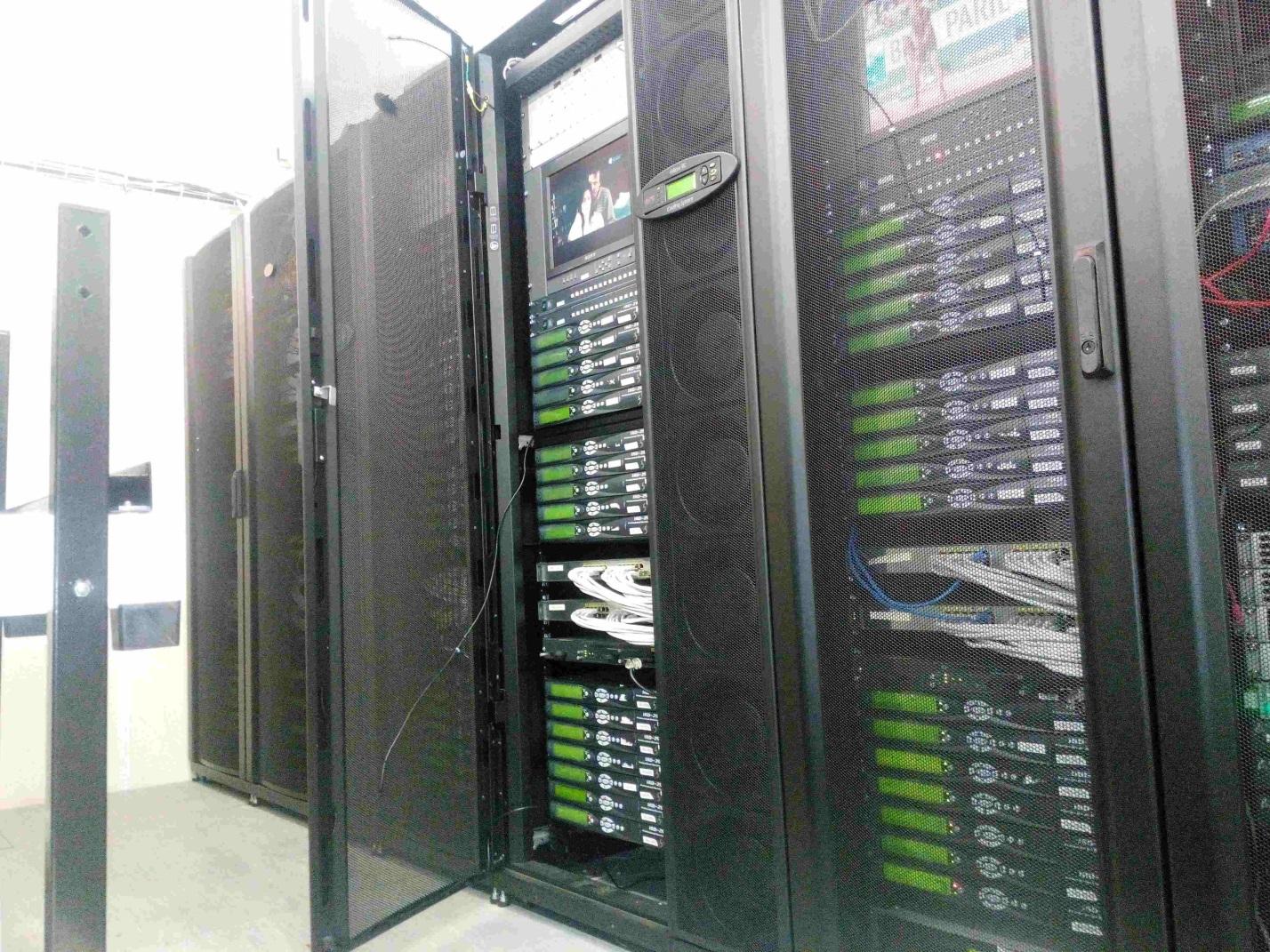

The signal from the satellite is already being broadcast in MPEG2TS format, which makes it possible to reduce its further processing after decryption to a minimum. Different streams are grouped (multiplexed) on special devices - multiplexers, after which they are encrypted by the conditional access system and fed into the backbone network. The backbone network distributes the signal to the district head stations.
Signals from studios received in uncompressed SDI digital format must first be converted (compressed) into MPEG-2/4 format. Harmonic MPEG encoders are used for this. At their outputs, the usual Multicast stream corresponding to the MPEG2-TS standard appears. It is compressed streams are fed to the input of the multiplexer, and then to the scrambling system.
All pay-TV channels go through servers that scramble to protect content from being viewed illegally. This process is very important, therefore TV studios cooperate only with operators who use reliable, certified closure systems. To encrypt DVB-C Digital TV, we use Conax. For IPTV, another encryption system is used - Verimatrix. Like Conax, it is a closed system.
After processing the TV channels of the DVB-C package with an encryption system, Multicast streams diverge over the IP network to district head stations. The DVB-C standard implies the transfer of content to a TV via a coaxial cable (the one that exists in almost every apartment for regular, analogue television). This standard was developed specifically for broadcasting digital television over cable networks.
To deliver a DVB-C signal to subscriber TVs, it is necessary to use additional equipment (DVB-C QAM modulators), and not ethernet switches as is the case with IPTV. However, DVB-C has a definite plus - the presence of coaxial cable in almost every apartment.
The most important thing in DVB-C is that the line is not loaded with anything but a television signal, and the Internet does not depend on the work of the Internet service. Coaxial cable is a free pipe that carries a radio frequency , high-quality and reliable TV signal. Thus, the subscriber receives a stable digital TV, which is not affected by the presence or absence of Internet access (whether you use Online or another Internet provider).
The signal is converted at the district head stations, geographically distributed throughout the city (there are 10 of them, according to the number of districts in the city of Moscow). They receive multicast streams from the central head end and convert them to analog SECAM D / K and digital DVB-C signals. The generated group radio frequency signal is fed to the optical transmitter and then via the optical cable (by the way, other services cannot be transmitted via this cable, HFC is used, not ethernet) goes to apartment buildings with optical receivers installed (they convert the optical signal into a radio frequency in turn, distributed over coaxial cable through the apartments). If necessary, an additional amplification of the radio frequency signal is made: in large houses, several amplifiers can be installed so that in all apartments the signal level meets the standards and regulatory documents.

To restrict and provide subscribers with access to TV channels in the OnLime digital TV network, a Conax AS production conditional access system (DMS) is used. This CAS has been used since 2010, and all subscriber devices in the On-Line DTV network (conditional access modules CAM and STB set-top boxes) are integrated and can work only with it.
Conditional access smart cards are an integral part of the subscriber's device to provide access to watching TV channels, are included in the Conax CAS COURT and are manufactured exclusively by Conax AS. This rule is usually for manufacturers of COURT - only the manufacturer produces smart cards for the COURT. This is a security policy requirement.
For broadcasting service EPG (electronic program guide) in OnLaym used software and hardware complex TeleTAG. Metadata supplied by external providers are automatically imported into the system, where the processing, generation and output of metadata in the operator platform format takes place.
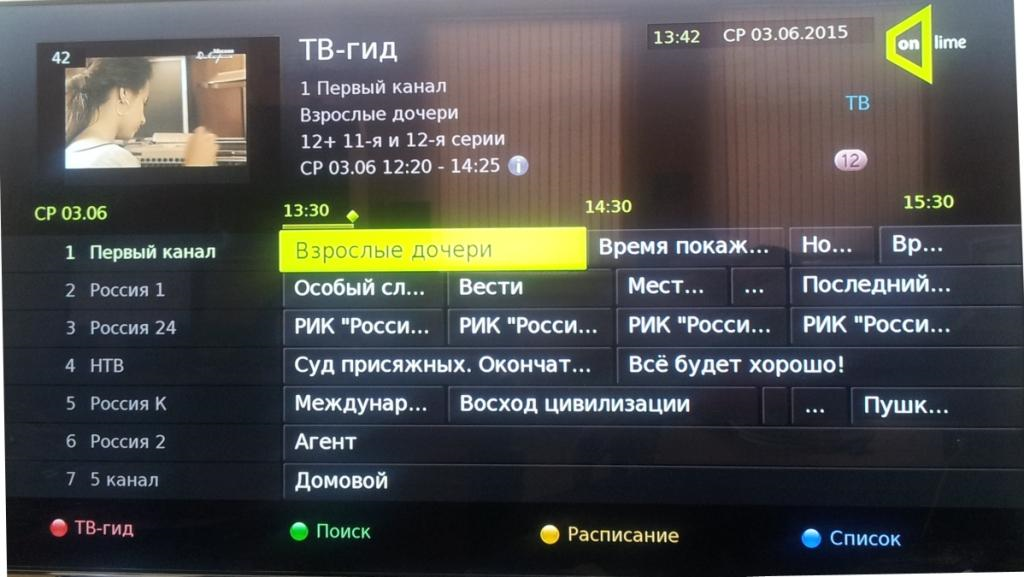
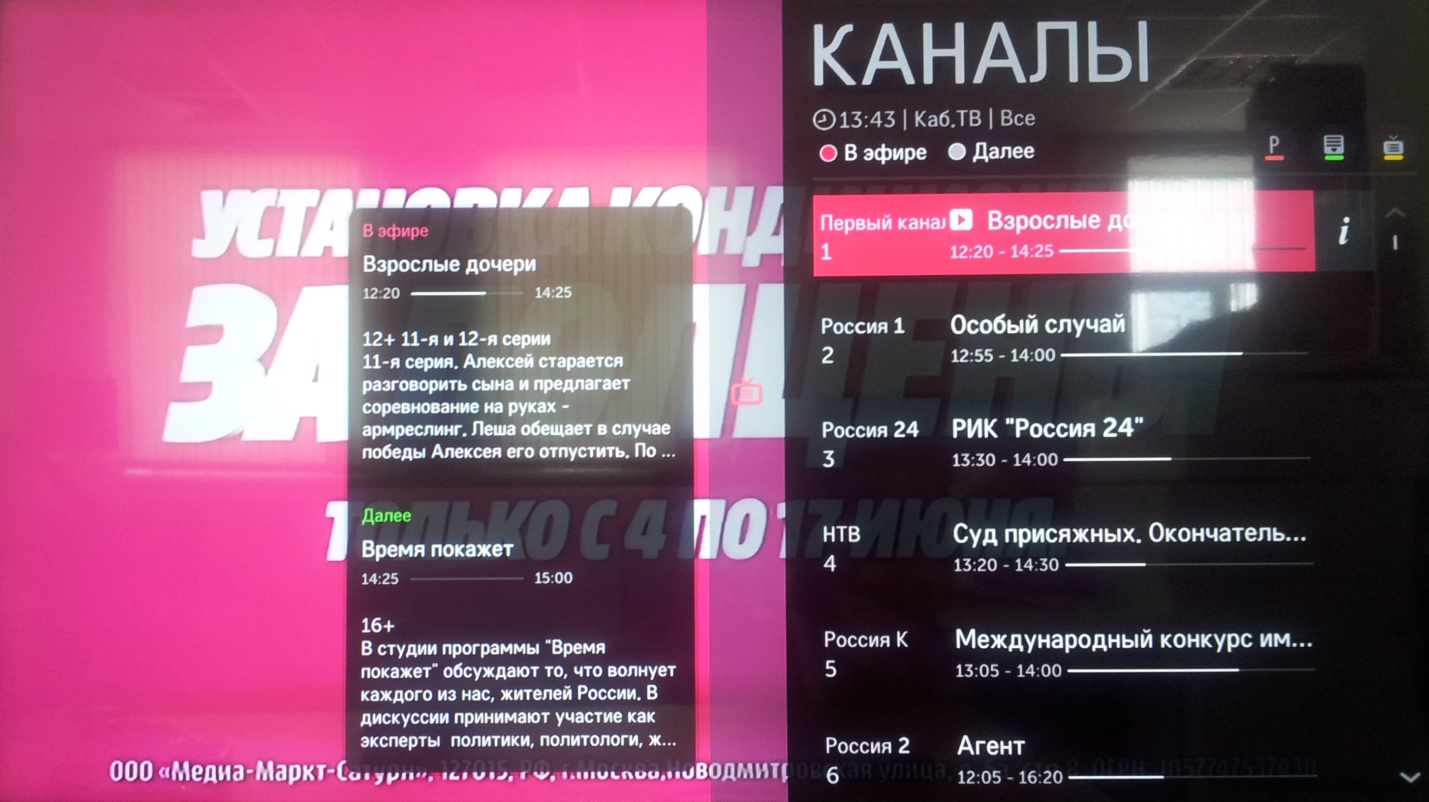
All data for the subscriber unit (TV with CAM-module or set-top box) is transmitted from the head station to the subscriber in the "live" format in the DVB-C signal. Both EPG program guide data, channel list, channel soundtrack information, etc., are generated in accordance with the generally accepted standard of digital television DVB, therefore they are understandable and can be used by any DVB-enabled device. Many TVs and all DVB-C OnLay consoles support automatic change of the list of broadcast channels. Subscribers do not need to reconfigure the TV or set-top box every time to find a new channel - it will appear in the list immediately after being added to the head station.
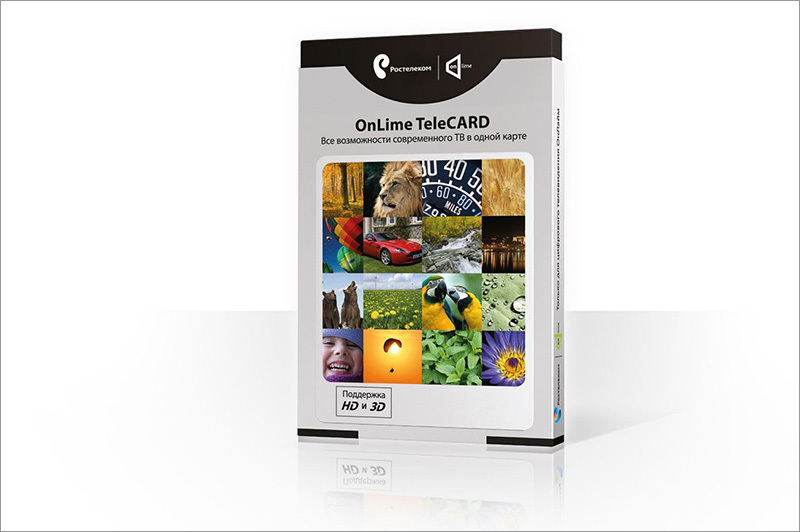
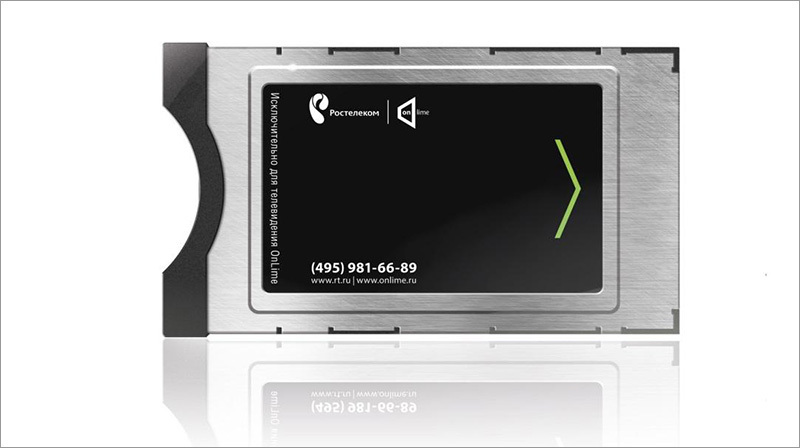
By inserting OnLime CAM-module into your TV, you immediately get access to more than 190 TV channels, including high-definition TV channels and the program schedule, and, unlike Interactive TV, you will not have an extra console and set-top box next to the TV, but content quality is no worse than IPTV. OnLime DVB-C is for those who need TV in the usual way, and not a powerful media center.
Unlike DVB-C, IPTV gives access not only to high-quality digital television, but also offers a range of additional services that enable the subscriber to directly interact with the TV.
We use the IPTV platform developed by SmartLabs and having a wide range of interactive services:
The platform itself consists of several parts:
Core
The kernel integrates all system components (encryption system, video on demand, video archive, etc.), controls access and collects service usage statistics. The kernel is a set of software installed on a group of servers distributed across regions to provide faster and more stable access. Servers provide authorization and connectivity to the set-top box system. They also contain and transmit to the set-top box information about the packages and the list of TV channels, the filling of the video library, the EPG program guide. The content storage of the video library is based on these servers. Also on the servers of the system is organized service "Management of viewing and recording."
Recording air
In our data center, we record broadcasts of all TV channels within 72 hours. This is a unique service in the Russian market. To do this, we use HP productive servers and large storage of information that does not take up much space in server racks. IPTV platform running software Smart Labs.
First, the video server records the TV broadcast in RAM. Data from RAM is used for broadcasting as part of a pause on a TV channel. Fragments that are required for broadcasting past programs are moved from the RAM to the disk array of the video server and stored for a limited time. After this period, the fragments are deleted, and new ones are written in their place, and so on in a continuous loop. If some fragments are marked as individually set for recording by at least one subscriber, they are not deleted, but transferred to the repository to provide the nPVR service. By default, after 30 days, the programs recorded for the subscriber are deleted if the subscriber did not mark the transfer as archived (the “Add to archive” button on the recorded program). Archive transfers are not deleted until the subscriber deletes them himself or removes them from the archive (button “Delete from archive” on the archive transfer). The programs removed from the archive are automatically deleted if they were recorded more than 30 days ago.
To ensure fault tolerance, recording TV channels, storing and broadcasting recorded programs is carried out by several video servers simultaneously.

The archive of all programs for 72 hours is available only to IPTV users, they have the opportunity to rewind any program / film / series to the beginning, if they did not have time to start broadcasting, or to turn on any program that was on TV in the last three days. This is a truly unique service that changes the perception of television. Now you can choose not only from 200 TV channels, but from thousands of programs that have passed in three days.
Prefix
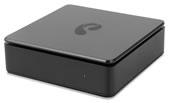 The console software is also developed by SmartLabs. The software is fully optimized for working with the IPTV core. The console uses the so-called "fat client", which allows to achieve high performance. Due to the interactivity of the service (two-way communication between the set-top box and the platform), the set-top box always has up-to-date data for work, and changes in the composition of services made on the platform (in the core) are available for use by the subscriber. The subscriber can connect / disconnect packages of TV channels, buy favorite movies and services, for example, Karaoke, through the set-top box menu.
The console software is also developed by SmartLabs. The software is fully optimized for working with the IPTV core. The console uses the so-called "fat client", which allows to achieve high performance. Due to the interactivity of the service (two-way communication between the set-top box and the platform), the set-top box always has up-to-date data for work, and changes in the composition of services made on the platform (in the core) are available for use by the subscriber. The subscriber can connect / disconnect packages of TV channels, buy favorite movies and services, for example, Karaoke, through the set-top box menu.
The console, of course, has all the popular audio-video outputs, and you can connect it to an old RCA TV, to a modern TV via HDMI, and to a powerful audio system. In addition to watching TV channels, a USB drive is connected to the console in order to play movies and watch personal photos.
Thus, choosing between On-Line Digital and Interactive Television, you choose, above all, the functionality you need, since the quality of the broadcast and the choice of TV channels from both services is more than good. If you want to be able to record and rewind and broadcast Smart TV functionality, then Interactive TV will suit you. And if it is more important for you to continue using the usual remote control from your TV, but at the same time get a large number of channels in the inaccessible quality for analog broadcasting, then Digital TV is invented for you.
Thank you for your attention, we are ready to answer your questions.

Getting the content
To broadcast television services within the network, they must first be received and encrypted. To obtain using different sources:
- Satellite broadcasting (DVB-S / S2)
- Directly from the studio ( SDI or ready Multicast)
- Own content broadcast servers (ready Multicast)
To receive a signal from a satellite, the central head station is used, where most of the receiving equipment is located.
')
The signal from the satellite is received by relatively small (2.4 meters) offset antennas, providing an excellent signal level and reception stability. The use of offset antennas in our latitudes in most cases allows us not to install expensive heating systems that protect against the accumulation of precipitation (snow), which have a strong effect on the reception quality.
We receive more than 100 channels from 10 satellites, for this we have an antenna post for 10 antennas. Reception from almost all satellites available in our region: Yamal, ABS2, HotBird, Astra, Eutelsat 36A / B, Thor, Eutelsat 9A, Telstar 12, Horizons-2, Intelsat 15.


The signal from the satellite goes to the multiswitch, to which the receiving equipment is connected. We use the multiswitcher manufacturer WISI, its products provide high quality and stable operation. To ensure high stability of the service, we use only the cable from Commscope. Additional passive dividers are practically not used. Usually there is an unbroken cable from multiswitcher to receiving equipment (satellite receiver).

Most of the satellite signal comes in encrypted form, for its reception and descrambling only professional receivers Harmonic of the ProView 7000, 2900, AppearTV and WISI series are used.
There is a feature of satellite reception, unknown to many users of household receivers - it is impossible to receive all TV channels with one conditional access card at once. The entire encrypted stream entering the receiver goes through the CAM module (a special device used to descramble streams), and the smart card (access card) is only a unique key for accessing the content.

It turns out that operators have to use one access card for each channel, and, accordingly, on a separate CAM module. Some CAM-modules can open several channels at once, but only from one transponder . We use only modules that recommend the use of television companies, the quality of the service depends on their stable operation. Domestic CAM-modules can periodically reboot spontaneously, which is uncritical for a domestic receiver, but very important for the operator.
We use more than 100 modules and, accordingly, 100 access cards, which we carefully monitor and change regularly, in order to maintain new encryption systems and not interrupt broadcasting for our subscribers.


Treatment
The signal from the satellite is already being broadcast in MPEG2TS format, which makes it possible to reduce its further processing after decryption to a minimum. Different streams are grouped (multiplexed) on special devices - multiplexers, after which they are encrypted by the conditional access system and fed into the backbone network. The backbone network distributes the signal to the district head stations.
Signals from studios received in uncompressed SDI digital format must first be converted (compressed) into MPEG-2/4 format. Harmonic MPEG encoders are used for this. At their outputs, the usual Multicast stream corresponding to the MPEG2-TS standard appears. It is compressed streams are fed to the input of the multiplexer, and then to the scrambling system.
Encryption (scramble)
All pay-TV channels go through servers that scramble to protect content from being viewed illegally. This process is very important, therefore TV studios cooperate only with operators who use reliable, certified closure systems. To encrypt DVB-C Digital TV, we use Conax. For IPTV, another encryption system is used - Verimatrix. Like Conax, it is a closed system.
Delivery
After processing the TV channels of the DVB-C package with an encryption system, Multicast streams diverge over the IP network to district head stations. The DVB-C standard implies the transfer of content to a TV via a coaxial cable (the one that exists in almost every apartment for regular, analogue television). This standard was developed specifically for broadcasting digital television over cable networks.
To deliver a DVB-C signal to subscriber TVs, it is necessary to use additional equipment (DVB-C QAM modulators), and not ethernet switches as is the case with IPTV. However, DVB-C has a definite plus - the presence of coaxial cable in almost every apartment.
The most important thing in DVB-C is that the line is not loaded with anything but a television signal, and the Internet does not depend on the work of the Internet service. Coaxial cable is a free pipe that carries a radio frequency , high-quality and reliable TV signal. Thus, the subscriber receives a stable digital TV, which is not affected by the presence or absence of Internet access (whether you use Online or another Internet provider).
The signal is converted at the district head stations, geographically distributed throughout the city (there are 10 of them, according to the number of districts in the city of Moscow). They receive multicast streams from the central head end and convert them to analog SECAM D / K and digital DVB-C signals. The generated group radio frequency signal is fed to the optical transmitter and then via the optical cable (by the way, other services cannot be transmitted via this cable, HFC is used, not ethernet) goes to apartment buildings with optical receivers installed (they convert the optical signal into a radio frequency in turn, distributed over coaxial cable through the apartments). If necessary, an additional amplification of the radio frequency signal is made: in large houses, several amplifiers can be installed so that in all apartments the signal level meets the standards and regulatory documents.

To restrict and provide subscribers with access to TV channels in the OnLime digital TV network, a Conax AS production conditional access system (DMS) is used. This CAS has been used since 2010, and all subscriber devices in the On-Line DTV network (conditional access modules CAM and STB set-top boxes) are integrated and can work only with it.
Conditional access smart cards are an integral part of the subscriber's device to provide access to watching TV channels, are included in the Conax CAS COURT and are manufactured exclusively by Conax AS. This rule is usually for manufacturers of COURT - only the manufacturer produces smart cards for the COURT. This is a security policy requirement.
For broadcasting service EPG (electronic program guide) in OnLaym used software and hardware complex TeleTAG. Metadata supplied by external providers are automatically imported into the system, where the processing, generation and output of metadata in the operator platform format takes place.


All data for the subscriber unit (TV with CAM-module or set-top box) is transmitted from the head station to the subscriber in the "live" format in the DVB-C signal. Both EPG program guide data, channel list, channel soundtrack information, etc., are generated in accordance with the generally accepted standard of digital television DVB, therefore they are understandable and can be used by any DVB-enabled device. Many TVs and all DVB-C OnLay consoles support automatic change of the list of broadcast channels. Subscribers do not need to reconfigure the TV or set-top box every time to find a new channel - it will appear in the list immediately after being added to the head station.


By inserting OnLime CAM-module into your TV, you immediately get access to more than 190 TV channels, including high-definition TV channels and the program schedule, and, unlike Interactive TV, you will not have an extra console and set-top box next to the TV, but content quality is no worse than IPTV. OnLime DVB-C is for those who need TV in the usual way, and not a powerful media center.
IPTV platform
Unlike DVB-C, IPTV gives access not only to high-quality digital television, but also offers a range of additional services that enable the subscriber to directly interact with the TV.
We use the IPTV platform developed by SmartLabs and having a wide range of interactive services:
- control of viewing: pause and rewind TV shows, watch the program first and view already passed programs for three days;
- weather forecast;
- karaoke;
- exchange rates;
- video library
- and even an interactive Yandex.Map where you can view the current situation with the traffic in the city.
The platform itself consists of several parts:
Core
The kernel integrates all system components (encryption system, video on demand, video archive, etc.), controls access and collects service usage statistics. The kernel is a set of software installed on a group of servers distributed across regions to provide faster and more stable access. Servers provide authorization and connectivity to the set-top box system. They also contain and transmit to the set-top box information about the packages and the list of TV channels, the filling of the video library, the EPG program guide. The content storage of the video library is based on these servers. Also on the servers of the system is organized service "Management of viewing and recording."
Recording air
In our data center, we record broadcasts of all TV channels within 72 hours. This is a unique service in the Russian market. To do this, we use HP productive servers and large storage of information that does not take up much space in server racks. IPTV platform running software Smart Labs.
First, the video server records the TV broadcast in RAM. Data from RAM is used for broadcasting as part of a pause on a TV channel. Fragments that are required for broadcasting past programs are moved from the RAM to the disk array of the video server and stored for a limited time. After this period, the fragments are deleted, and new ones are written in their place, and so on in a continuous loop. If some fragments are marked as individually set for recording by at least one subscriber, they are not deleted, but transferred to the repository to provide the nPVR service. By default, after 30 days, the programs recorded for the subscriber are deleted if the subscriber did not mark the transfer as archived (the “Add to archive” button on the recorded program). Archive transfers are not deleted until the subscriber deletes them himself or removes them from the archive (button “Delete from archive” on the archive transfer). The programs removed from the archive are automatically deleted if they were recorded more than 30 days ago.
To ensure fault tolerance, recording TV channels, storing and broadcasting recorded programs is carried out by several video servers simultaneously.

The archive of all programs for 72 hours is available only to IPTV users, they have the opportunity to rewind any program / film / series to the beginning, if they did not have time to start broadcasting, or to turn on any program that was on TV in the last three days. This is a truly unique service that changes the perception of television. Now you can choose not only from 200 TV channels, but from thousands of programs that have passed in three days.
Prefix
 The console software is also developed by SmartLabs. The software is fully optimized for working with the IPTV core. The console uses the so-called "fat client", which allows to achieve high performance. Due to the interactivity of the service (two-way communication between the set-top box and the platform), the set-top box always has up-to-date data for work, and changes in the composition of services made on the platform (in the core) are available for use by the subscriber. The subscriber can connect / disconnect packages of TV channels, buy favorite movies and services, for example, Karaoke, through the set-top box menu.
The console software is also developed by SmartLabs. The software is fully optimized for working with the IPTV core. The console uses the so-called "fat client", which allows to achieve high performance. Due to the interactivity of the service (two-way communication between the set-top box and the platform), the set-top box always has up-to-date data for work, and changes in the composition of services made on the platform (in the core) are available for use by the subscriber. The subscriber can connect / disconnect packages of TV channels, buy favorite movies and services, for example, Karaoke, through the set-top box menu.The console, of course, has all the popular audio-video outputs, and you can connect it to an old RCA TV, to a modern TV via HDMI, and to a powerful audio system. In addition to watching TV channels, a USB drive is connected to the console in order to play movies and watch personal photos.
Thus, choosing between On-Line Digital and Interactive Television, you choose, above all, the functionality you need, since the quality of the broadcast and the choice of TV channels from both services is more than good. If you want to be able to record and rewind and broadcast Smart TV functionality, then Interactive TV will suit you. And if it is more important for you to continue using the usual remote control from your TV, but at the same time get a large number of channels in the inaccessible quality for analog broadcasting, then Digital TV is invented for you.
Thank you for your attention, we are ready to answer your questions.
Source: https://habr.com/ru/post/263207/
All Articles